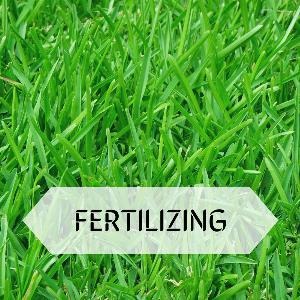Fertilizing ranks as one of the most important of early season chores for all growing things. For lawns, more water and fertilizer will penetrate through to the roots if you can rake and aerate it in the spring, and it will be thicker, greener and more lush. Use a good quality fertilizer. The nitrogen in lawn fertilizer works on the green top growth, the potash works on the root system. A properly fertilized lawn stays a good thick green, and is vigorous and beautiful, whereas an under fertilized lawn is not only less attractive, it is also much more susceptible to drought, insects, and weeds. For shrubs and young trees, fertilize in the spring just before or as the first leaves appear, and it is the beginning of the active growing season. The next year’s flowers and growth is based on this year’s growth pattern, which is greatly influenced by fertilization. Fertilize once or twice more during the summer, but not past the first part of August. Fertilizing past this time will catch the tree or shrub going into winter with new growth that hasn’t had enough time to harden off before cold weather arrives, making it more susceptible to winter kill. Apply the fertilizer evenly on the outside edge of the watering basin, and water in thoroughly. Also, if you want your plant to grow as fast as possible, be sure to have a grass free ring of at least three feet in diameter around it, but the bigger the better. Grass competes with the plant for fertilizer and water, and actually inhibits the growth of nearby plants, slowing them down and preventing them from growing to their full potential. Remove the grass by digging it away, or by carefully applying an herbicide, or plant killer. Hy-Yield Killz-All will kill the grass and any other weeds that may be growing there, but shield the tree or shrub with plastic or cardboard before you spray. Grass Getter, Over the Top, and Grass-B-Gon are all grass killers that kill grass only and won’t touch other weeds, or flowers, nor will it harm the tree or shrub. Once you have removed the grass, keep it away, and keep moisture in, by mulching around the plants in a layer 2-3″ deep.




